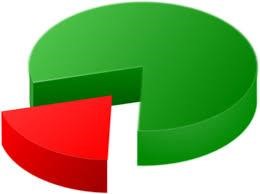Rob Eastaway and Brian Hobbs take over our maths column to reveal who solved their puzzle and won a copy of their New Scientist puzzle book, Headscratchers.
When solving problems in the real world, it is rare that the solution is purely mathematical, but maths is often a key ingredient. The puzzle we set a few weeks ago (New Scientist, 30 September, p 45) embraced this by encouraging readers to come up with ingenious solutions that didn’t have to be exclusively maths-based.
Here is a reminder of the problem: Prince Golightly found himself tied to a chair near the centre of a square room, in the dark, with chained monsters in the four corners and an escape door in the middle of one wall. With him, he had a broom, a dictionary, some duct tape, a kitchen clock and a bucket of water with a russet fish.
John Offord was one of several readers to spot an ambiguity in our wording. Four monsters in each corner? Did this mean 16 monsters? John suggested the dictionary might help the captors brush up on their grammar.
The russet fish was deliberately inserted as a red herring (geddit?), but we loved that some readers found ways to incorporate it, either as a way of distracting the monsters or as a source of valuable protein for a hungry prince. Dave Wilson contrived a delightful monster detector, while Glenn Reid composed a limerick with the solution of turning off the computer game and going to bed.
And so to more practical solutions. Arlo Harding and Ed Schulz both suggested ways of creating a torch by igniting assorted materials with an electric spark from the light cable. But Ben Haller and Chris Armstrong had the cleverest mathematical approach. After locating the light fitting in the room’s centre with the broom, they used duct tape and rope to circle the centre, increasing the radius until they touched the wall at what must be its centre, and then continued circling to each wall till they found the escape door. Meanwhile, the duo of Denise and Emory (aged 11) used Pythagoras’s theorem to confirm the monsters in the corners would be safely beyond reach. They, plus Ben and Chris, win a copy of our New Scientist puzzle book Headscratchers.
It is unlikely you will ever have to escape monsters in this way, but spiral search patterns when visibility is limited are employed in various real-world scenarios: rescuers probing for survivors in avalanches, divers performing underwater searches and detectives examining crime scenes, for example. Some telescopes have automated spiral search algorithms that help locate celestial objects. These patterns allow for thorough searches while ensuring you don’t stray too far from your starting point.
Of course, like all real-world problems, mathematical nous isn’t enough. As our readers have displayed, lateral thinking and the ability to improvise are human skills that help us find the creative solutions an algorithm would miss.
For more such insights, log into www.international-maths-challenge.com.
*Credit for article given to Rob Eastaway and Brian Hobbs*


